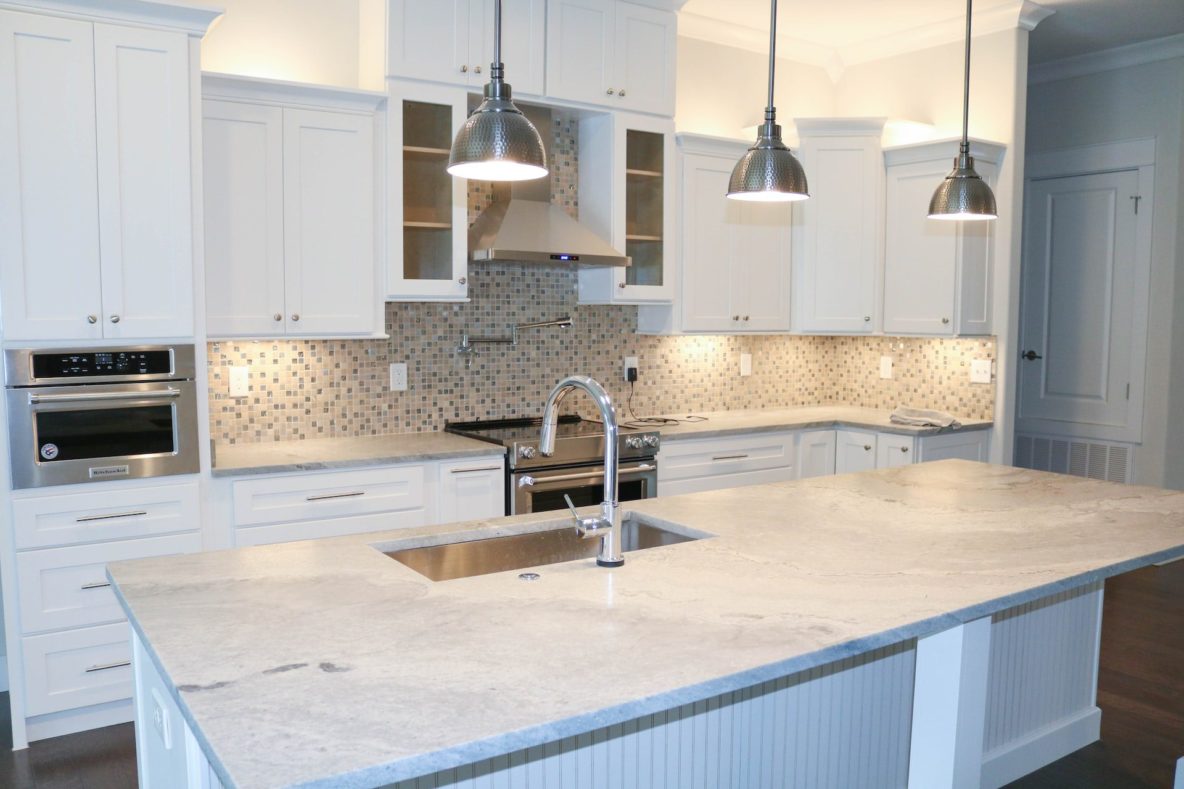Interior designers have for years tried to break homeowners' addiction to granite counters. Alternative surfaces have been introduced such as stainless steel, concrete, glass, quartz, wood, and marble, but these surfaces lack granite's luxury look.
Here are five things you need to know if you're getting granite countertops in your Albuquerque home for the first time:
Choose the Right Stone
The term granite refers to granular igneous rocks formed by cooled magma and indigenous minerals. There are many colors of granite depending on where it is quarried, including gray, pink, red, green, blue, and gold. The rarity of the vein of granite can drive up the price considerably, as well as the thickness and the type of fabrication you choose.
Make sure you don't choose granite from a sample when you shop for it. In a sense, you're buying the whole slab, so that's how you should shop. Be sure to look at the whole slabs to minimize waste and to ensure sections are matched. In some cases, you may be able to purchase more than one slab from the same lot. To accommodate large kitchens, they are sliced like toast. When they are placed back to back, they form a butterfly or mirror image.
The beauty of granite is the movement of color and the pattern of streaks and dapples, so choose wisely. A strong graphic pattern will be highly energizing, while a softer color and pattern will be calming.
Measure Carefully
The price of granite is determined by the square foot. Multiply the length and width of each section of your kitchen, such as countertops, backsplash, and an island, to figure out how many square feet you need. Once that has been done, add up each section's square feet.
Measuring involves more than just that. It is important to consider edge allowances, seam allowances, sinks, and other factors. You can tell your salesperson how many square feet you think you'll need, and he or she can direct you to slabs and lots that are large enough to fulfill your order. Once you choose, the salesperson will "hold" the slab with a deposit, until the fabricator can come out to measure exactly.
It is recommended that you install your cabinets before the fabricator arrives. In addition to appliances, if you plan to install a new sink or cooktop, you will have to give the fabricator the measurements of those items as well. Let the fabricator take the measurements. That way the fit is guaranteed.
Be Aware of Slab Thickness
There is a difference in thickness between granite slabs, so expect to pay more for a three-inch thickness than a one-inch thickness. If you choose a thick granite, make sure your cabinets can support that much weight.
The next step is to decide whether you want a bullnose, an ogee, a bevel, or a raw edge. Granite can also look different depending on its finish. Granite that has been polished is glossy and reflective. A matte finish is achieved with honed granite. A leather finish has a textured appearance.
Ask for as Few Seams as Possible
The granite pattern and color should flow as smoothly as possible when doing a large area like a kitchen. Seamless slabs are more valuable than seamed pieces because they're like works of art. Check with the fabricator to see if any parts can be done without seams. Depending on the design of your kitchen, it is sometimes possible.
For a cheaper option, you can choose granite tiles, which have no seams, but they don't add much value to your home. You can also order from scraps the dealer may have leftover from other jobs, but they're only be suitable for small jobs where you don't have to match another granite, such as a powder bath or laundry.
Granite requires care.
Granite is fairly heat-resistant and easy to clean, but you should keep in mind that it's also porous. It can crack, chip, stain and show scratches.
Use a trivet or hot pad instead of directly placing hot pans on the surface. Clean granite only with granite-safe cleaners. Bleach, ammonia products, scouring pads, and anything acidic such as lemon or vinegar should not be used to clean. Don't use dish soap to clean as it can leave a dulling film on the surface. Spills of wine, juice and tomato sauce should be cleaned up quickly.
Some finishes such as polish act as more of a seal, but you can also purchase granite sealers at your local market. Just wipe it on once a year or so to keep your countertops looking their best.
If you're wondering whether your countertop needs sealing, spill some clean water or the surface and cover it with a paper towel. If it leaves a stain, it will go away eventually, but you'll know it's time for sealant.
